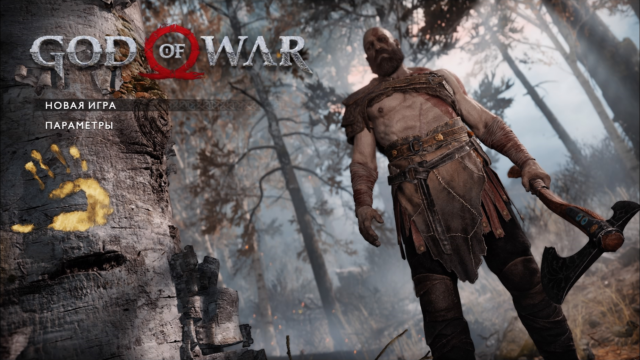Dragonopoeia – PC Version Review of Dragon's Dogma: Dark Arisen
No matter how many times Dragon’s Dogma is reissued, one thing remains unchanged: it is strange. It is very tempting to summarize all my impressions in this way, without delving into a tedious analysis of all the gears, because the game will still go against any expectations. It is strange – and you have to try it yourself to understand it.
Yes, it is an RPG. No, forget about the plot. It exists, but in a primitive form and with a clear misunderstanding of how to turn a banal setup into a good story. Enjoy another interpretation of the “chosen one” trope, where a simple villager becomes the chosen one in the midst of haymaking season and sets out to save the world: a seemingly invincible dragon arrives, makes our hero immortal, curses at everyone, and sits somewhere threatening humanity, for which he must be killed. That, in essence, is the whole point of the commotion here, and it can only intrigue those who have never seen quality fantasy.

To be fair, many colleagues in the genre use a similar idea – take, for example, Dragon Age: Origins, to which the above description applies more than one would like. The difference is that other projects carefully play out the worn-out motif, disguising it with interesting details and branches, while Dragon’s Dogma offers nothing. Here, there is only a dry and flat concept: you are cooler and smarter than everyone else, and evil will not destroy itself. As an excuse for everything that is happening, it is somewhat acceptable, but it definitely does not deserve close attention. The situation slightly improves towards the end, and even then, thanks to the intriguing lore, which hardly manifests itself until the epilogue.
The game, in general, cares little about the familiar values of role-playing games. A meticulously crafted world, carefully crafted characters, dialogues with literary twists – who needs them? Only the key characters possess any semblance of character, of which there are at most ten, and only they are capable of communicating with the hero in a more or less complete manner. The rest of the NPCs are cardboard fools, wandering through completely sterile locations and delivering the same routine line. The level of interest in conversations here still exceeds that of Dead Rising, but it is hardly something to be proud of.


Edible supplies have a tendency to spoil right in your pockets, so it’s better to spend them on treatment as soon as possible.
Obviously, in unfavorable conditions, exploring the surroundings loses all meaning. Despite the decent size of the map, the game simply has nothing to reward the pioneers with – at best, a long journey will please you with a modest camp in the middle of nowhere, where the most reasonable creature will be a merchant. However, you don’t have to go far to see examples of the criminal emptiness of the environment: just reach the only major city and appreciate the beauty of its lifeless labyrinths, connecting rare functional points like the black market or a hotel. There are no fresh rumors on the streets, no colorful townspeople, no spontaneous incidents – even, it’s scary to say, Morrowind portrayed civilization much more convincingly. After such an experience, you thank the developers once again for improving the fast travel system, it’s really handy here.
Sometimes, though, in the wastelands you can find a quest or two – and finally fall into despair. Within the storyline, we are spoiled with full-fledged tasks with clear objectives and activities, but the side activities are almost entirely borrowed from the worst MMOs about killing 45 rabbits and collecting 15 herbs. Only the latter try to sweeten the pill with a couple of lines of accompanying mini-story, while Dark Arisen shamelessly throws routine at you without comments or motivation – you just have to do it, that’s all. Such assignments don’t even have a “client” – they are taken from a bulletin board and completed remotely.
It’s even more frustrating that the claim to something more is still noticeable. The few side quests are accompanied by unique dialogues, characters, and events, and a couple of them even flirt with non-linearity of progression and consequences of decisions – but there are so few of them that they have no impact on role-playing. And it’s hard to call them exciting, again, due to the poor work on the game world: it would be much more interesting to search, for example, for the main character’s girlfriend if the authors had spent some time on their relationship.

Epic shots go particularly well with the soundtrack of “The Lord of the Rings” – the game music is good, but it is rarely and not always accurately played.
The game truly shines in its gameplay. It makes you forget about all the flaws and design mistakes. Dragon’s Dogma is like a lighter version of Dark Souls, where the player is still at the bottom of the food chain but has slightly better chances of survival against goblins with massive health bars.
The combat system is the most interesting aspect. Unlike From Software’s creation, it doesn’t get too caught up in deep tactics and is generally quite arcade-like, occasionally reminiscent of the equally beautiful and old The Lord of the Rings: The Return of the King. You don’t need to be a master of combos or have a black belt in dodging to successfully defeat the local bestiary – it’s enough to timely alternate between basic attacks and special moves, the arsenal of which constantly expands, and not to expose yourself to the attacks of particularly large enemies. Of course, it’s not on the level of Devil May Cry, which the fan community increasingly compares it to, but the combat immediately captivates with its dynamic nature, ease of mastery, and RPG variety.
However, this doesn’t mean that the battles lack depth. On the contrary, intricacies emerge one after another, especially when facing bosses. Battles with them are a separate source of fun and challenge in Dragon’s Dogma. Each creature in the menagerie has its own weak spots, and finding and exploiting them is the key to success in these encounters. Some weaknesses, like the glowing stones in a golem’s body, are immediately visible, while others need to be discovered through experience, such as setting a griffon’s feathers on fire or bombarding a dragon with dark magic. Class differences also affect the approach to bosses: while a rogue with a bow will have no trouble killing a cyclops from a distance, a paladin will literally have to climb the giant’s body and poke its eye with a sword.
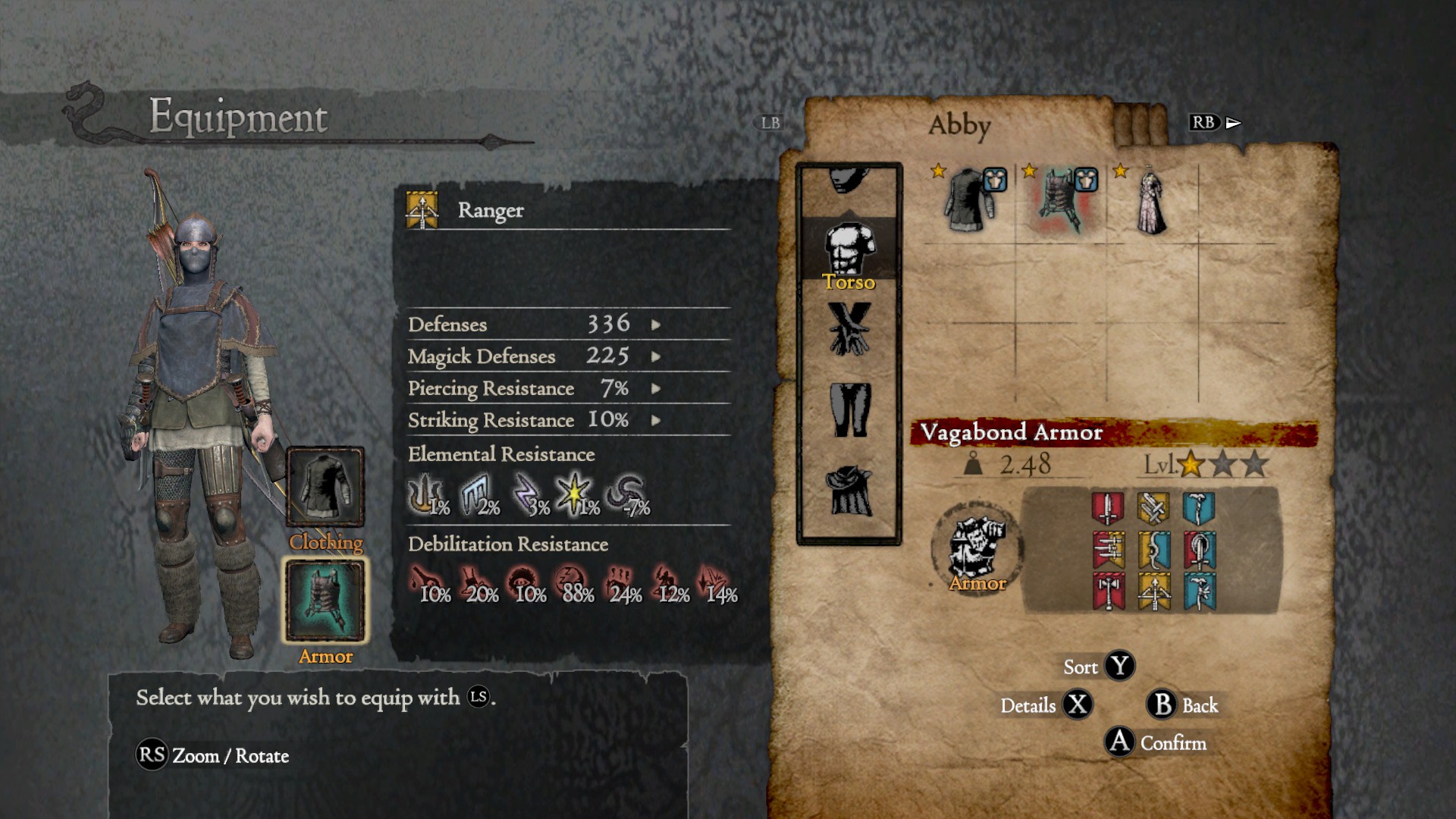
There is unexpectedly a lot of equipment here. You can’t try everything in one go.
Fortunately, the game allows you to try everything at once, as one of its great merits is the wonderful character development. Initially, there are only three ordinary professions to choose from, and the introductory chapters force you to play as a warrior, rogue, or mage – but soon after that, you have the opportunity to change your specialization to any other without losing progress. This is an insanely cool find that gives incredible flexibility to builds, brings total variability to the process, and leaves a loophole for players who are disappointed in their chosen direction. Moreover, periodically juggling profiles is even useful, as they determine the proportions of growth in certain characteristics. In simpler terms, if you suddenly need to increase the stamina reserves for your mage, it would be better to at least level up as a ranger for a few levels, as the increase in this parameter is much higher for him. The presence of unique perks, which are only unlocked when leveling up a specific class but are universal in use, also encourages experimentation.
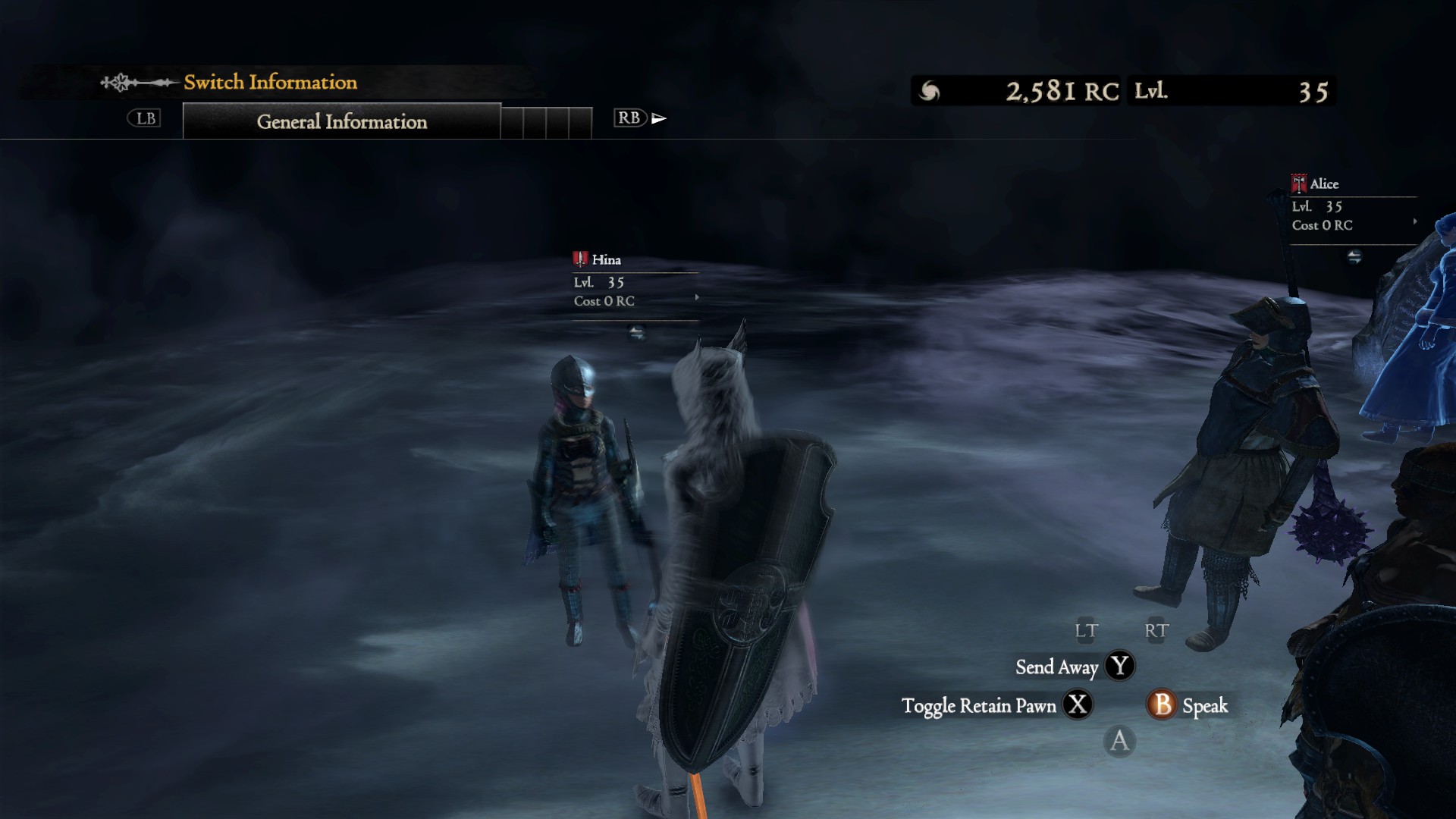
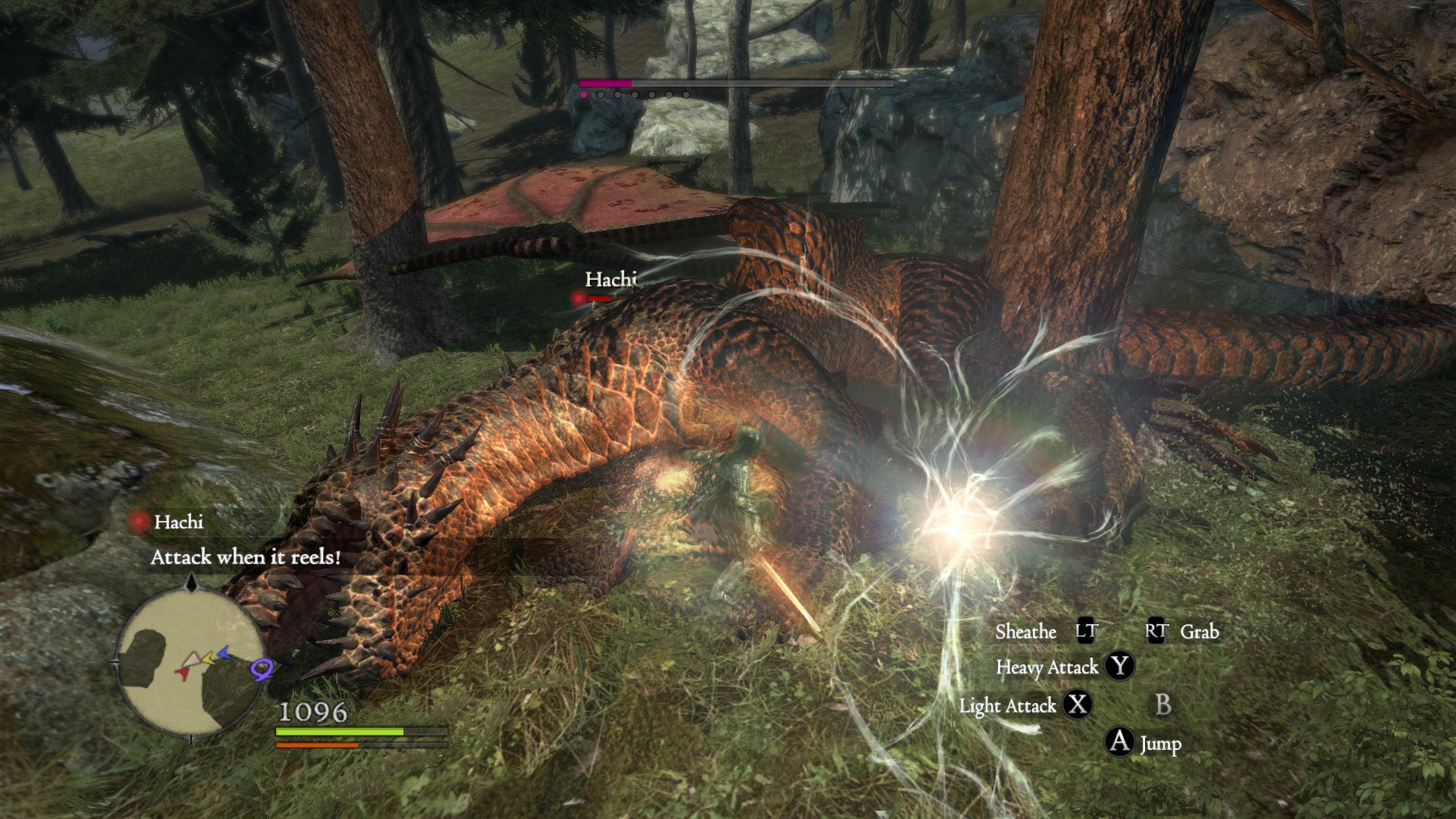
Going with a fiery sword against a dragon – be it small – was an unspeakable foolishness.
And so that you wouldn’t feel so lonely, an unusual pawn system has been introduced in Dragon’s Dogma. These companions, who are called by this offensive nickname here, can be no more than three in your party: one you create yourself, and the other two you catch from the online database of creatures raised by other players. They are completely faceless as characters, but infinitely effective and independent in battle. They grab small enemies, distract particularly fierce creatures, climb on the backs of large beasts, and generally act in a coordinated manner without any orders. While you can’t call the AI’s work flawless, it fairly successfully simulates the teamwork necessary when facing serious opponents. The ability to have full control is only lacking in the most critical moments – when a mage forgets to heal a mortal wound, all that’s left is to press the “Help” button.
However, it is not worth getting attached to your companions. Out of all the chaos, only your personal pawn rises up the career ladder with you – the guests from other worlds always remain static and maintain the level they reached at the time of hiring. This is another advantage in favor of the variability of gameplay: the party can be easily customized and adapted to the needs of a specific situation.
Another interesting feature of pawns is their constant chatter. Fortunately for many console players, the PC version finally added an option to disable the voices of the companions, but the fact is still noteworthy. Despite the lack of personalities, they actively comment on what is happening, but they do it like formal autists, repeatedly babbling obvious and undeniably stupid lines. For those who didn’t catch it the first 76 times, they will definitely repeat that wolves hunt in packs, and during a long journey, they will kindly remind you about the map in your pocket. In addition, an icon of dialogue may suddenly appear above one of the idiots, hinting at important thoughts about a recent triumph. “Quest completed, master” is the weightiest thought you can expect.
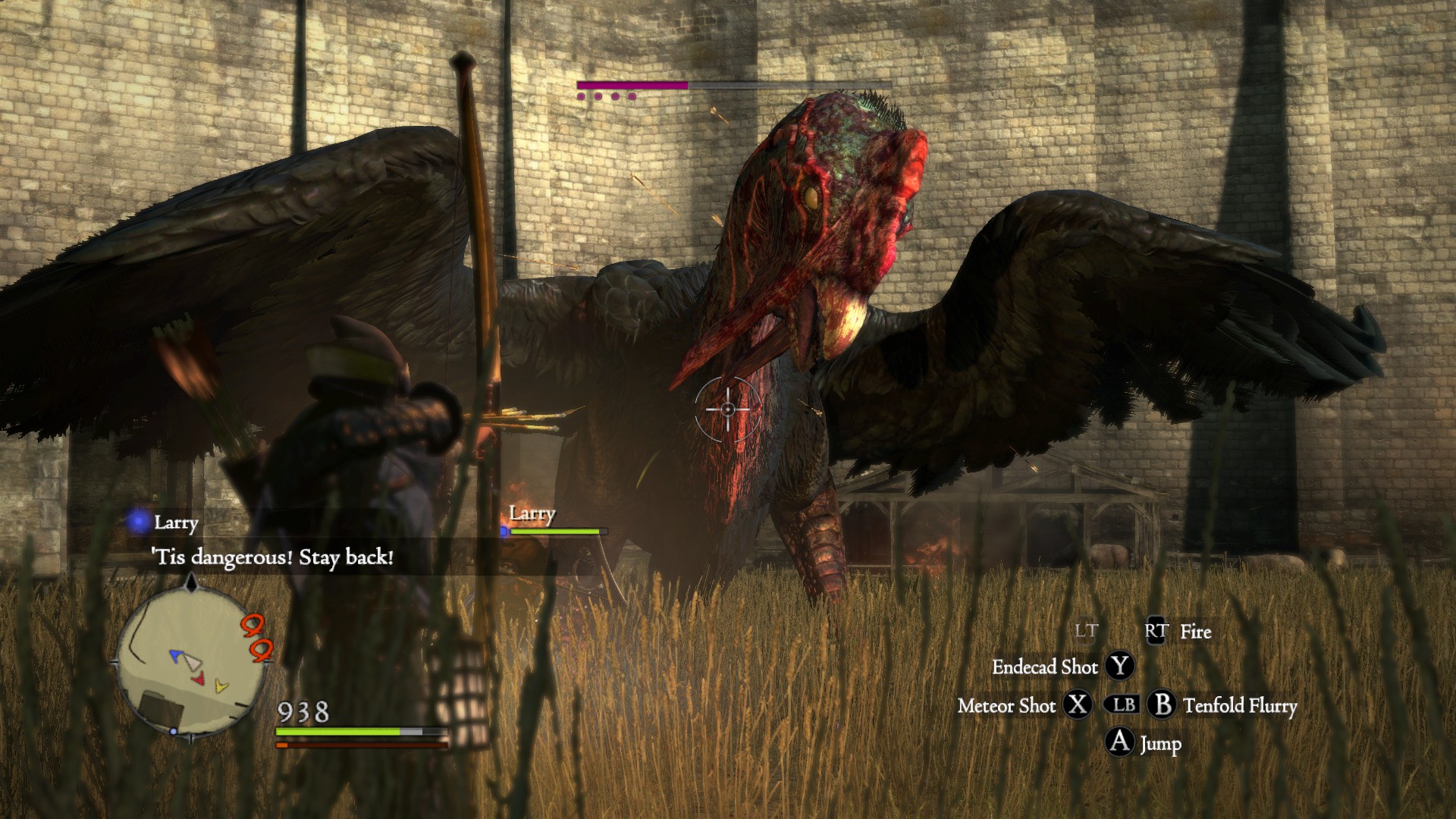
The mythical giant is preparing to catch a volley of eleven arrows.
And everything would be fine, if only Dragon’s Dogma didn’t explain how to play it in the worst possible way. The tutorial here is an unjustifiably long contextual presentation on the topic of “100 things that are done here the same way as in all other games,” while many more important questions remain unanswered. You have to figure out quests and the essence of pawns through trial and error, discover completely unexplained crafting and upgrading systems, find out after creating a character that their height and weight affect certain characteristics, towards the end of the game accidentally learn that NPCs have daily schedules and hidden love lines, and much more. The introduction to party management is even more spectacular: they teach you how to choose pawns on a shooting range with wooden mannequins that can be easily broken, without really understanding what was being said. The trainer will still pat you on the back approvingly and say, “See how important the choice of pawns is!” Not that we need to be led by the hand through all the hardships of adaptation, but understanding the mechanics here is extremely boring and uncomfortable, and it’s easy to miss important things and ruin your further progress.
Thanks to that, the first two or three hours of Dragon’s Dogma are a hurricane-like wandering around the corners of a few villages in the hope of enlightenment. In our case, the introduction to the game went something like this. After throwing the village shaman off a cliff, we went down the only road and saw the guards easily killing the monster that we were supposed to defeat. After throwing the guards off another cliff, we returned to the village and met a charismatic black man named gg. After throwing gg off a new cliff, we realized that he was actually another player’s pawn (should have guessed earlier, huh?), and we had been waiting for a story character hiding in the darkest tent for about forty minutes, who was not marked on the map. It was around that time that the action began to make sense and the picture described in this article began to emerge on the horizon, although it didn’t go without a few more cliffs. In general, the path was difficult.
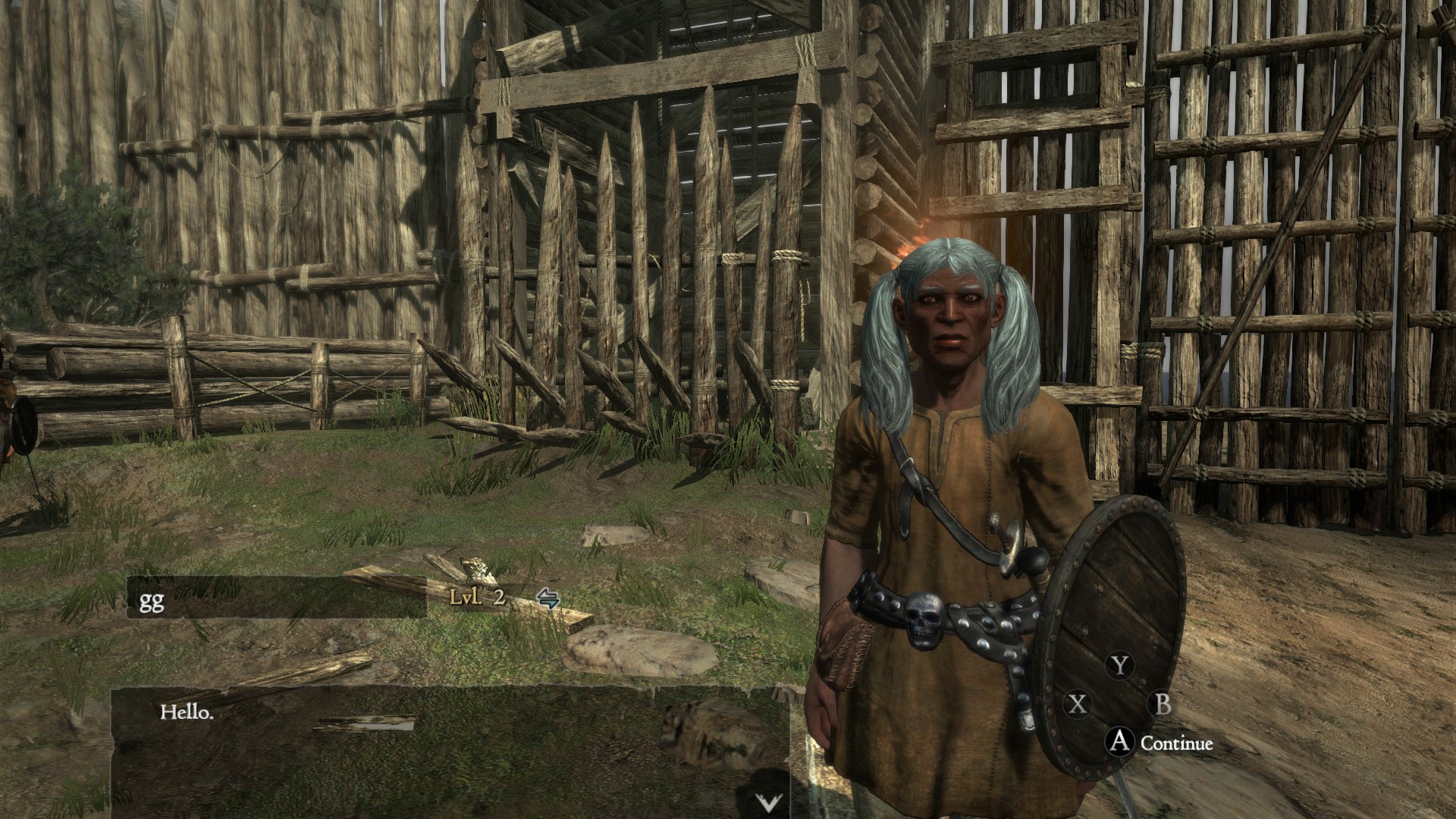
Oh, if only you could hear his squeaky voice!
As for the peculiarities of the PC port, everything here is in a comparative order. Capcom swore by all the hadoukens that we would be greeted with “stunning visuals” and backed up their promises with quite decent screenshots – but in the end, age took its toll as expected. The game did not look super modern even in 2012, lagging behind in terms of beauty compared to Oblivion, which had celebrated its fifth anniversary by that time, and now, even with modest graphical improvements, it cannot be considered a treat. If anything can knock you off your feet, it is the unforgivably ugly sprites, shamefully scaled fonts, and goblins appearing a meter away from the main character. They did add a rich assortment of settings and support for sky-high resolutions, but in the era of adequate ports, this is no longer surprising.
But when it comes to the controls, by God, they could have spent more time and redesigned the archaic interface that ruins half the enjoyment of the game with its nightmarish design. The keyboard workers were given an exclusive function of binding items to hotkeys, as if apologizing for the fact that there is still no direct access to the map, quest journal, and equipment – all these functions need to be dug out from the pause menu, which is much scarier in practice than in words. Even a gamepad in hand does not add intuitiveness, although it definitely dulls the discomfort.

But the main thing is still that Dragon’s Dogma pulls you back. At first, you complain for a long time, saying that everything is crooked and askew, you wonder how it is even played correctly, you scream from the whims of Japanese game design and exit the game with a feeling of extreme satiety, and then you still catch yourself thinking that it would be nice to finish off that griffin tomorrow evening and save up for a nice helmet. Naturally, new opponents come in place of the feathered beast, the equipment gets better, and the time spent in the game goes beyond all decency. And that’s good.
Unfriendly-looking, but incredibly captivating inside, Dark Arisen may have lost its charm compared to polished competitors, but it still holds its own better than many. The monstrous plot and bleak game world haven’t gone anywhere, but the damn successful mechanics still do everything possible to make these problems seem insignificant.
Share
Discuss
More Reviews




